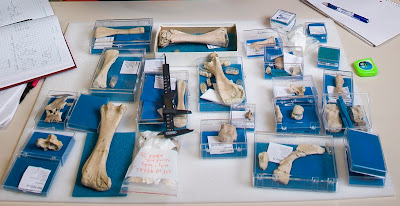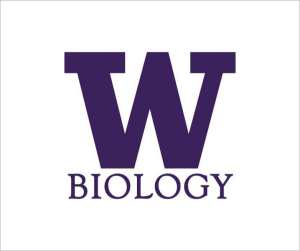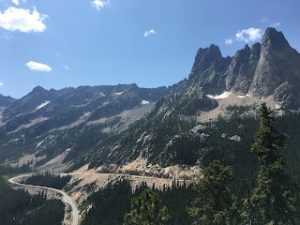You might have heard, Biograd Meg Whitney gave an incredible talk at GSS about baby giant dinosaurs, winning her the best talk of the day! Now, the paper has just been published, in Science, and you can read all about it. Below, Meg describes the research that went into this paper. Click here for the full article and here for more information from NSF about the research.
Long-necked dinosaur, sauropod, babies hatched out of eggs the size of a grapefruit and from there grew to their record-breaking body sizes. Although we have fossils of sauropod eggs, hatchlings are exceedingly rare. As you might imagine, a freshly-dead baby dinosaur would have been a tasty bite for a predator, making it difficult to capture them in the fossil record. As my undergraduate research project at Macalester College, I helped to describe a rare baby fossil and investigate the life of the smallest of the largest animals to have ever walked on earth.
Rapetosaurus krausei, lived about 67 million-years-ago on the island of Madagascar. Adult Rapetosaurus reached 40-50 feet long (comparable to a school bus), would have been 15 feet at shoulder height, and weighed an impressive 35,000 lbs. (that’s more than twice what the largest modern elephants weigh). This baby specimen had a hip height of only 1 foot and weighed close to 50 lbs; it was about the size of a golden retriever. Take a moment and let the cuteness factor really settle in.
We took a multi-faceted approach to studying the biology of this baby looking at the outer anatomy of the bones as well as the internal microscopic anatomy using histology and micro CT scanning. All of the bones of this individual contained a ‘hatching line’ that allowed us to determine that baby Rapetosaurus was just a few weeks old at death and weighed 5-7 lbs at birth, the same as a Chihuahua. We also found several lines of evidence indicating that this sauropod was precocial, meaning it had to be mobile without support from a parent right after birth. First, this baby’s bones look like mini adult bones (isometric growth). Additionally, the histology of calcified cartilage at the ends of the bones is thin because the baby would have needed to use its limbs to support its body right after hatching. Finally, the histology revealed bone remodeling which would have allowed this baby to retain its adult-like bone shape throughout ontogeny. We don’t, however, have any evidence of parental care, such as protection or feeding, even after birth. It’s possible that there could have been some parental care that we just can’t capture a record of from or fossils, but until we find evidence telling us otherwise, we think that these babies were fending for themselves. Together these features are indicative of an animal that hatched out of the egg and had to get moving – or else. This is similar to sea turtles, today.
We also found evidence of the baby’s death. The shape of the calcified cartilage at the bone ends looks similar to modern birds who are about to reach their adult size. This individual, however, had 90% of its body size left to grow into. An alternative explanation could relate to the seasonally drought-ridden environment that this baby came from. In times of starvation, animals will stop bone growth and the production of cartilage, which would give rise to a morphology similar to what we see in baby Rapetosaurus.



